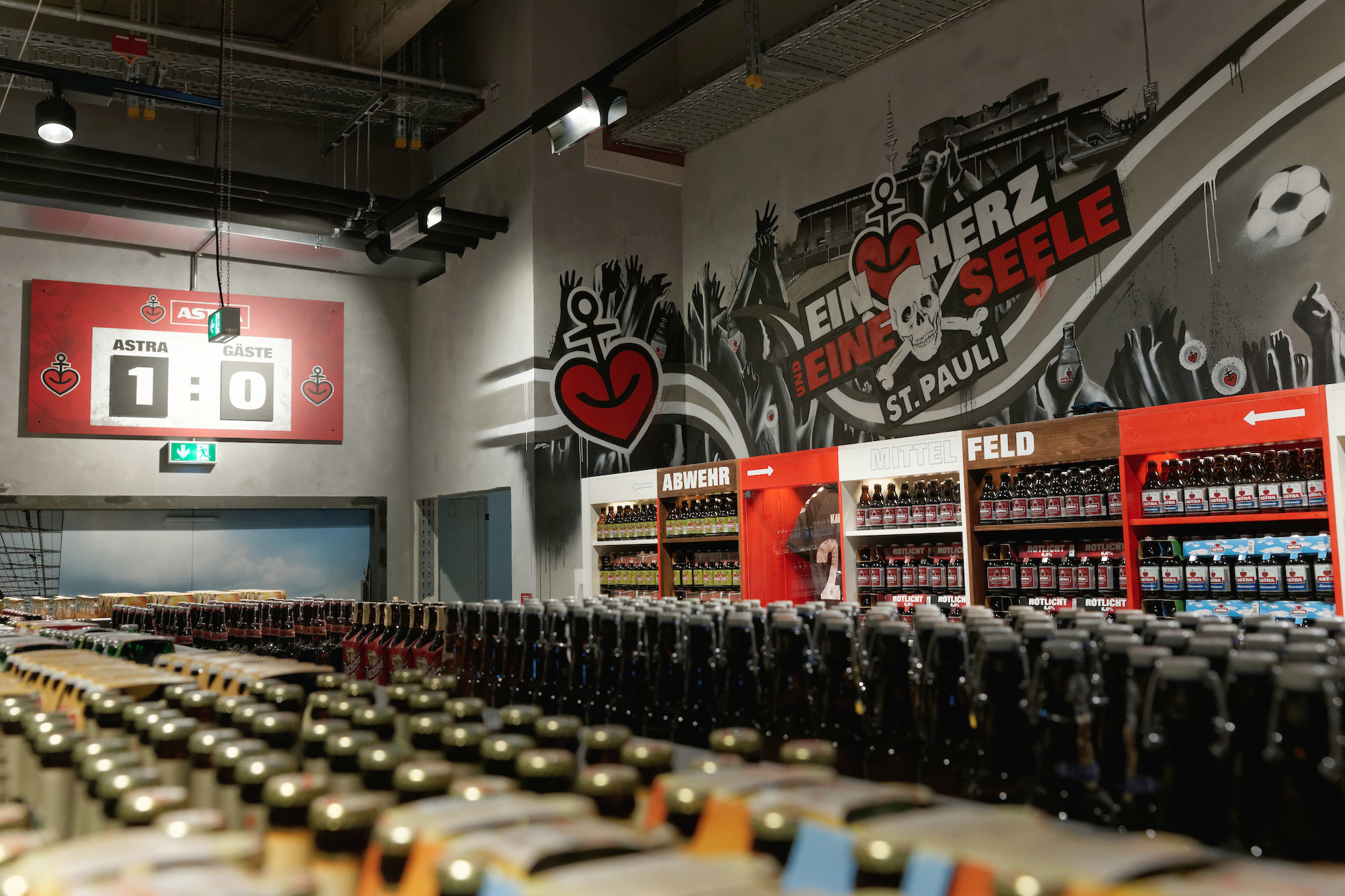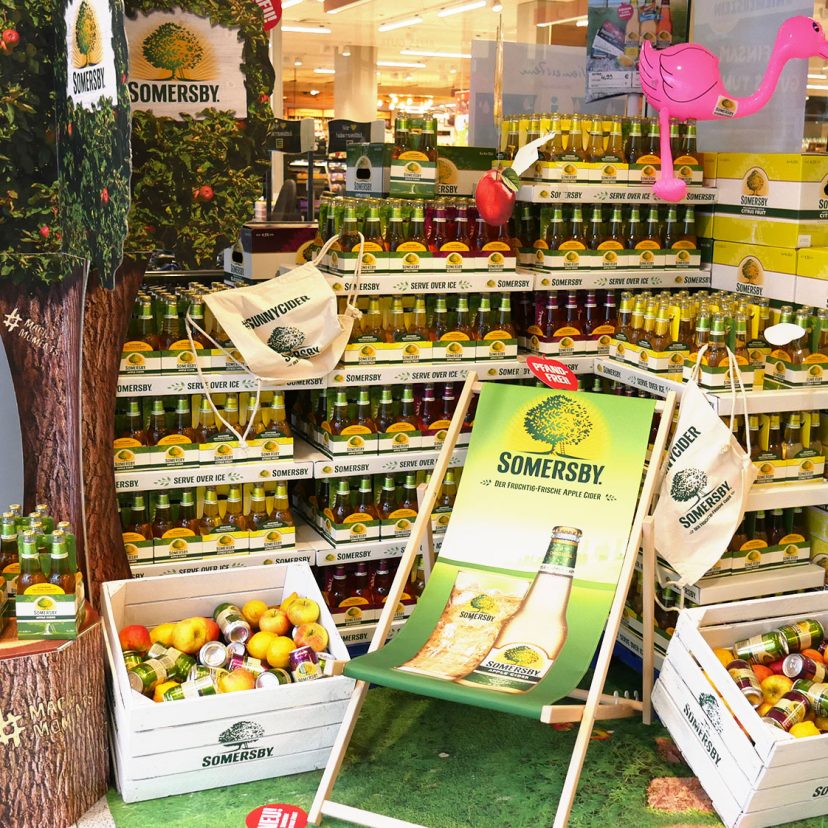The design of a product is an important factor, which unites the look, zeitgeist and functionality. However, “form follows function” also applies to marketing and especially to the product presentation at the Point of Sale. After all, the configuration of the POS with all its facets is geared towards the needs of the shoppers. The simpler the access to the brand and products is, the greater the sales success.
Creative Director Andreas Ligendza tells us why the right design at the POS is so important and how to develop it.
From a Surf Instructor to a Creative Director. Your CV is certainly unusual. How did you end up at STEIN?
That’s true. My CV is not that of a typical marketer or designer. I studied Tourism Management and spent several years working as a Surf Instructor. At some point, I started designing boards and street wear, and that’s when I discovered my penchant for design.
When Stein came knocking at my door long before 1999, I accepted their offer and started turning brands into a unique experience at the POS. Back then, this area was still relatively small and unappealing – meanwhile, the competition is a lot more alert.
So what made you settle down at STEIN? What makes this agency so special?
The people are what make it special. Everyone who leaves us ends up doing so with misty eyes – we definitely have a very special work culture.
The entire package convinces me to this day. STEIN is not a classic agency and the POS is a topic that is constantly changing. That’s why it’s still exciting to work here after all this time. I like coming up with big ideas and implementing them with a fantastic team of experts.
What is your role in this team?
I am actively involved in New Business, so I’m always meeting new people and potential clients. I am a sort of “tomorrow” for the client – I am a visionary, sometimes an inspirer and not least, an advisor.
What inspires you?
It differs. Sometimes, I dream about a design at night. And with a bit of luck, I still remember it in the morning and can directly start implementing it. I actually hardly ever go into stores, but I do walk through life with my eyes wide open, so my surroundings tend to inspire me. Deriving inspiration from things that are already in stores wouldn’t be the right approach anyway. You would never end up creating anything new.
I want to change things, because change is an important aspect of my work. Nothing ever stands still, especially not at the POS.
How do you define POS design?
This is a word construction – on the one hand, it describes a place where a product is sold. But on the other, we are talking about design – the creation of an object in function and appearance.
If we bring both together, it’s about the creation of a sales location based on functional and visual aspects.
Which company has a POS design that really impresses you?
I take my hat off to Globetrotter. They really make products come alive – whether a climbing wall, hiking trail or kayak pool. The customer can test everything in the shop and can enjoy a very intensive product experience.
Another good example is Rose Biketown. The store is one of the few that manages to combine online and offline retail very well. They put a strong focus on individualisation. Everything is specially tailored to meet my needs – from a personalised bike to 3D foot measurement to find the ideal shoe. In addition, the product presentation in the stationary store is almost akin to an art exhibition.
But it doesn’t always have to be a huge, expensive concept. With attention to detail, some skate and surf shops create a shopping world that invites the customer to spend time there and just feel good.
The key is always the target group. All three types of stores clearly convey this. They each have niche target groups and serve their needs and expectations very well.
Which elements do you particularly like to work with?
I love provocation. Standing out and being different. Working with contrasts. For example, the tension between organic materials vs. high-sheen surfaces – natural shapes vs. straight lines. I also like to work with light to create a special atmosphere.
The most important thing is: the POS must integrate all senses because the shopper does that, too.
In your opinion, which demands come together at the POS?
The POS must focus on the shopper. We have to understand at which point he or she is on her Shopper Journey and take the entire journey into consideration.
This means that the design must follow the functionality. It is not just about appearance, but also has to serve its purpose. No matter whether this is awareness, recognition or information.
What is the biggest mistake you can make regarding POS Design?
There isn’t that ONE big mistake. The most decisive factor is to think: why am I doing this?
A mistake that many designers make is that they do the work for themselves and create things how they would like it. They lose sight of the expectations of the shopper.
The design mustn’t steal the show. Instead, it should support the product. The message must be transported in a clear and easily understandable way.
Compared to the early days of POS, we now have lots of exciting possibilities for product presentation. But just because these possibilities exist, doesn’t mean that we always have to use them. This can especially be observed at the POS in stationary retail stores for technology. There are a lot of good concepts and ideas, but in practice, the shopper rarely uses them because the actual added value isn’t clear. The shopper asks him or herself: what is the benefit for me? Why is it here?
Where do you see the biggest challenge here?
It’s quite simple really: we have to understand the role of the POS. As the name already says, the POS is the place where the product is purchased. This can be online or offline. Both channels have their own strengths, which complement each other perfectly.
The biggest challenge is to combine the offers and to leave it up to the customer to decide on how and where he or she wants to shop.
Online retail scores points for its vast selection and the easy comparison of prices. The reviews and the fact that everything can be researched are also very important aspects.
The advantage of stationary retail, on the other hand, is that the shopper can experience the product. And we can enhance this experience with a suitable contribution to the actual purchase.
The challenge lies in recognising these advantages and using them sensibly. Only those who adequately meet the shopper at the POS will end up doing business with him or her.
In your opinion, which current trends will change the POS world?
The Shopper Journey points the way here. The role of retail and the retail structures are changing. In the past, stationary retail was the main point of sale. Now it has to compete with online trade. The solution here is clearly linkage. Can I animate a shopper to purchase the product straight away or will he or she go home to compare prices online first?
Another point is measurability. Online retail is clearly the pioneer here but stationary retail is catching up. For example, motion profiles can be set up. Returning shoppers are identified and can be approached in an individual manner. A lot is going to happen in this area in the coming years.
I expect that the most exciting changes will result from the use of Virtual and Augmented Reality. We have been observing these techniques for years and have already realised several pilot projects. Both techniques pay into the topic of “customer experiences at the POS” and can offer the customer real added values when used correctly.
Today: cardboard and paper. Tomorrow: digital and controlled content that reacts to me personally.
Do you have an overarching vision?
My vision is that the borders between online and offline will dissolve. The shopper doesn’t care. He or she will buy wherever they happen to be – seamlessly.
But the real world hasn’t managed to achieve this connection to the digital world yet. It can only work if we have even more information about every single shopper – online as well as offline.
Of course, data protection is a huge issue. Which data about the consumer am I allowed to collect and use? In this regard, the focus has to be on the benefit for the shopper. The data belongs to the shopper, so I have to handle them transparently. If I offer the shopper an added value, he or she will be willing to make his or her data available. But if it’s only about sales and his or her data are only a means to an end, we won’t succeed on the path to optimal connectivity.
In my opinion, the vision is: let’s try everything (glasses, new order functions, etc.).
But things may turn out totally different. The complete opposite, so to speak.
As a result of digitalisation, which already tracks practically every single one of our movements and actions, stationary retail in particular may end up becoming one of the final private destinations. A place where not everything I do is tracked, saved and then used for advertising purposes.
Contrary to the complete digitalisation where I can do almost anything online, a dialogue partner in the form of a desire for intimacy and the human being behind it may emerge.
I think both scenarios are exciting.



